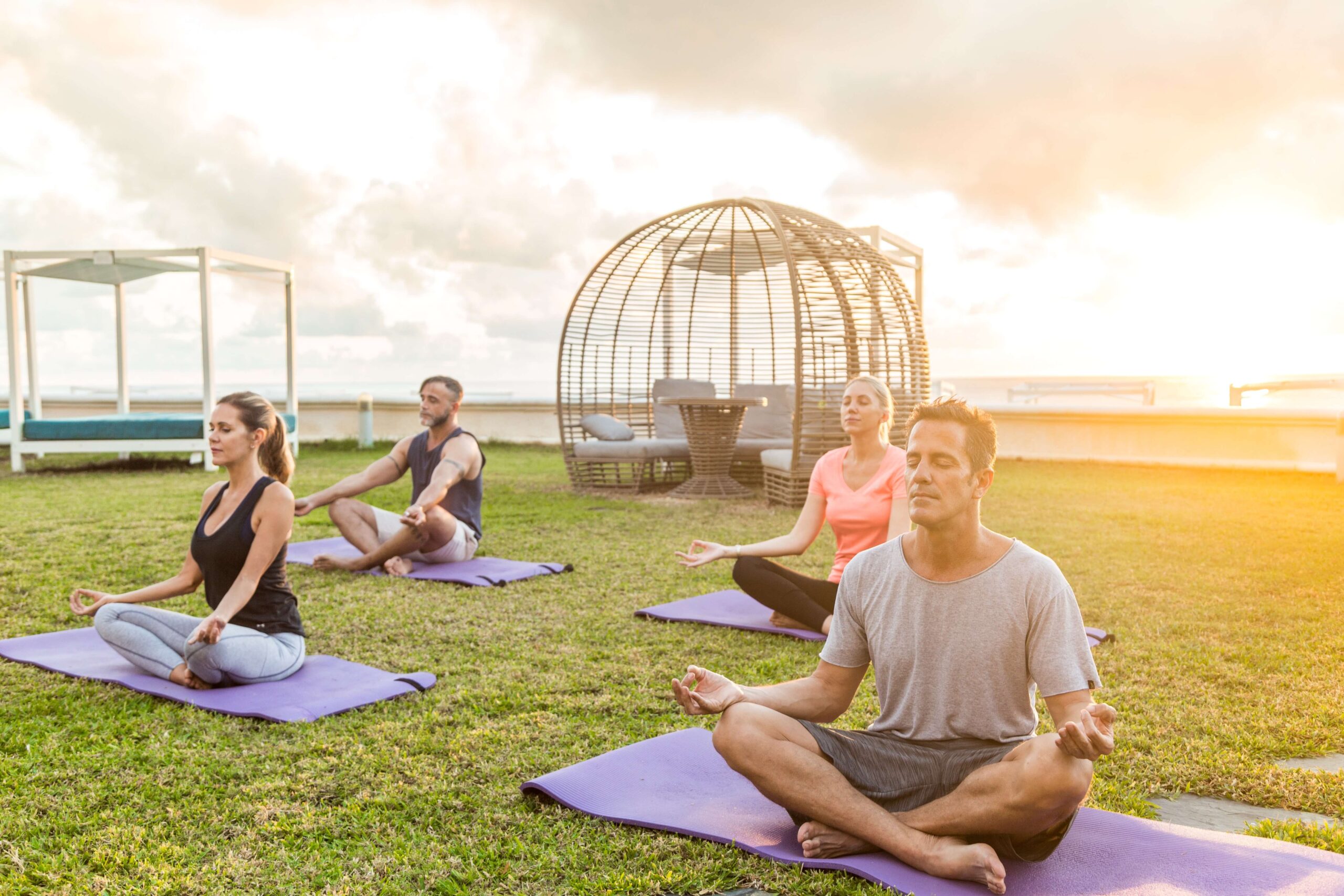When we practice yoga we often wonder if the poses we are doing are correct, and perhaps wonder why they look differently on us than on others. Yoga teacher Silvia explains what is important in aligning and refining our yoga poses, and also how functionality and aesthetics affect the way we do poses, as well as what our own uniqueness has to do with it.
Correcting Yoga posture alignment, does it really matter?
When I first started practicing yoga asanas (physical yoga postures), I felt great and liberated, but also at times quite awkward. I felt myself getting stronger, standing up straighter, but also wondered ‘Am I doing this right?’. Some poses didn’t quite click for me, and in no way looked as great as everyone else’s. Many great teachers have helped me align and improve my asanas, but most of all, have helped me feel into them, understand them in my own body, and express them from the inside out rather than perform the perfect looking poses.
What is yoga pose alignment? It is using your whole body in an integrated way to move it into a specific shape, aligning it correctly in order to hold a pose and gain the most benefit from it.
A correctly aligned pose will allow you to use the right amount of muscular strength, mobility, and flexibility in your practice. It will help you both in yoga, and also in your life, the way you walk, hold yourself, and your self-confidence and promote general ease and comfort. Probably most importantly, a long-term yoga asana practice will help you be able to sit and meditate for longer periods of time without strain on your back, hips, and neck.
Uniting the body and mind
In class, you hear a teacher’s instructions about where to place your feet, how to hold your spine, where to engage a muscle in your leg, your belly, how to reach through your arms, etc. You are absorbing and translating these instructions into physical action which is creating a pathway each time from your mind to your body, uniting the two. Once you get familiar with this, things start to ‘click’ and make sense. Then the real fun begins – learning to breathe correctly while doing a pose, which is the ultimate ‘alignment’, and the asana’s true expression. It is meditation in movement.
Some insights about Yoga posture alignment:
1. Your body is unique.
Alignment for you might not be the same as for someone else. The build of your joints and proportions of the body vary greatly from person to person. For example, if someone tells you to straighten your arms over your head, straight for you might be very different than straight for someone else. There is only so far your skeleton and musculature will allow you to straighten your arm and this has to do with how your joint is built and bones naturally stack. Finding the correct amount of effort in straightening to your limit and holding it there, is what your definition of ‘straight’ is. After some time, you might be able to change this and improve your range of motion, strength, and flexibility to a degree. If you were to force straighten your arms beyond your natural capacity, it might realign your spine, and overarch the upper back. Another place you see these differences is simple cross-legged positions, for many people they are very diverse.
If you are interested in learning more about this, you can check out these wonderful short videos by renowned yoga teacher Paul Grilley here and here where he introduces these ideas.
2. Use yoga props.
Blocks, belts, blankets, and chairs, are all wonderful ways to access and explore alignment in poses, even sometimes when you think you don’t need them. They help you learn to use the correct muscles, enter the pose gradually and spare yourself from injury. Check in with your teacher on how to use them.
3. Ask your teacher to break down the most common postures for you and check your alignment. Sun Salutations, warrior poses, backbends forward bends, etc. Ask your teacher to help you find your correct alignment for the most common postures that you do over and over frequently, and some insight about your unique anatomy so you have something concrete to work towards. Getting a few private lessons is a great investment and will make the group classes even more beneficial. If you’re really into it, there are many interesting yoga anatomy workshops out there too.
4. Be aware of ‘doing what feels good.
During our lifetimes we build up movement patterns, some are good and some can be detrimental in the long term. Bad movement patterns can come from sitting, doing exercises incorrectly for a long time, computer usage, old injuries that our bodies had to work around, etc. When we are told to do what feels good in a pose, we sometimes revert to a movement pattern that might feel comfortable in the body at the moment – but is actually furthering a posture or habit that doesn’t help our overall well-being or can even cause injury. Challenging our alignment and changing the way we do a posture in order to correct it might be a hard process and doesn’t always feel good, but that’s ok too. Try not to judge yourself if it’s hard, take it to step by step, and always remember to balance the amount of ease and effort you exert. This is what alignment is all about.
5. Functionality over aesthetic.
We all get inspired by a beautiful yoga pose, with long lines and fluid angles. That’s fine, but not when we lose the connection to our practice because we try to fit our bodies into postures that we are not ready for, or how it looks on someone else. The practice comes from the inside out, we feel inwards, we adjust, we breathe, engage, relax, and all of this combined makes a functional yoga pose. It works for you, and sometimes you will feel the aesthetic beauty too. But it’s not the priority or why we do it. Remember – yoga asana is meditation in movement and just one part of the big picture of our practice.
6. Keep it playful.
Try different things, and diversify your practice. Dare to unaligned and do something totally different, so you can feel the ‘other side of the pose, and then come back to the ‘classic’ alignment. Sometimes poses make sense to the body when you leave it for a totally different angle, and then come back to it.
Summary
When I first became a yoga teacher I was a bit too focused on getting everyone to do the yoga poses ‘correctly’, the way that I learned. In the end, it is you, the student, who taught me to let go of that rigidity and to realize alignment can be different for everyone. If we are too obsessed with perfection, that becomes a story the mind easily loops into, which is the exact opposite of what the yoga practice is all about. So, celebrate your own unique anatomy, stay curious and open, and never hesitate to ask your teacher for guidance, but most of all, enjoy the journey.
Hopefully, this is helpful, and always feel free to reach out to me to ask about alignment! This goes for everyone, past students, present students, it is really something I am passionate about. There is nothing like feeling the yoga practice progress and feel more connected, more intimate, and less rigid.
About Silvia
Silvia is a Yoga teacher, physiology enthusiast, and spiritual seeker. She is passionate about making the yoga practice accessible and functional for everyone and helping others find their personal expression with joyful movement. Read full bio



